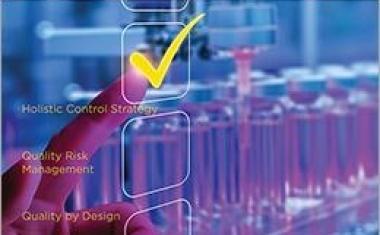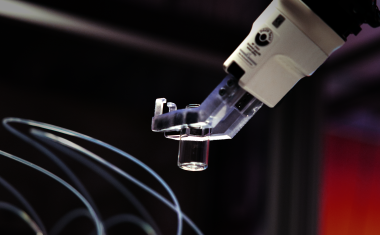Biosimilar Monoclonals: Rising Above the Challenges

Embracing Monoclonals - Modern manufacturing methods and analytical tools have developed to a level that enables assured production of highly similar monoclonal antibodies. In Europe, the biosimilar revolution has begun to embrace monoclonals, and to date, the Committee for Medicinal Products for Human Use (CHMP) has provided scientific advice on the development of a number of biosimilar monoclonals, and draft guidelines are imminent.
Less Complex Structure
Monoclonals are in some ways structurally less complex than some of the initial biosimilars approved in Europe. In particular epoetins, which are not as large as monoclonals, display a complex array of added sugar molecules in short branching chains. In fact, about one third of the mass of an epoetin is contributed by sugar residues. Monoclonals also possess added sugar molecules but to a lesser extent.
Nevertheless, the pattern of added sugar molecules on the monoclonal can heavily impact important biological effects, such as potency and clearance from the blood.
It follows that like all proteins, monoclonals exist as a heterogeneous mixture of molecules; these include different patterns of added sugars and also other differences, such as modifications of some amino acid side chains. Aggregates or fragments which may form during manufacture or on storage add to the heterogeneity.
Biological Testing Important
Biological testing plays an important role in distinguishing changes that are inconsequential from those that are not. In view of this heterogeneity, each batch of originator product will differ from the last and, therefore, there is a need for the biosimilar manufacturer to understand the acceptable range of variability of the originator product. This cannot be done by studying just one batch.
The primary challenge is not so much whether differences can be detected but to understand the impact of the differences that certainly will be found. In fact, many differences in structure may have no clinical impact on activity, while slight differences can have a major effect. Biological testing using a range of different methods that assess the ability of the monoclonal to bind target receptors, interact with immune system and exert an effect on cellular and animal models can play an important role in distinguishing changes that are inconsequential from those that are not.
Animal Data of No Value?
Monoclonals present special challenges in the design of immunogenicity studies; such studies may prove of little value or even not feasible for some monoclonals because of immunogenicity and/or species specificity. The key demand for in vivo safety data will be to give some degree of comfort that it is safe to enter clinical trials with similar monoclonal. However, even this will present a challenge when no suitable species for toxicity testing exists at all. What is clear is that there is the need to maximize whatever data can be gleaned from using in vitro based techniques and a minimum of animals.
Phase 1 Studies Require Novel Thinking
As for any product, monoclonal development needs to start with Phase I, which the CHMP guidelines state should be finished before advancing to Phase III, Phase II generally not being required for biosimilar programs. Phase I studies are frequently conducted in healthy volunteers, but with monoclonals this may not be possible due to potential toxicity. To make matters more difficult, single-dose studies in patients might not be possible, either. This could mean that it may only be possible to study comparative pharmacokinetics in patients at steady state, perhaps as part of the Phase III program.
Demonstrating Comparative Efficacy Presents Major Challenges
If a monoclonal product displays comparable physico-chemical and biological properties as well as similar biological effects to the originator product, this provides convincing evidence for a similar clinical efficacy profile. The clinical comparability program is, therefore, confirmatory not exploratory and the magnitude and complexity of the plan should be reduced accordingly.
It is not a question of demonstrating efficacy all over again but understanding the science and providing just sufficient evidence to demonstrate expected therapeutic equivalence. Thus a limited program ought to be acceptable although in effect the test population needs to be representative of the complete target population and sensitive to differences that might impact the efficacy, safety, and immunogenicity profile.
The current CHMP non-clinical and clinical comparability guideline requires that "efficacy and safety has to be justified, or if necessary, demonstrated separately for each of the claimed indications." (CPMP/437/04) If two monoclonals prove to have comparable physico-chemical and biological properties and display a similar pharmacokinetic and pharmacodynamic profile, then it seems reasonable to deduce that if comparable efficacy and safety are demonstrated in suitable and sensitive populations, similar effects would occur in other populations and situations.
One also needs to bear in mind that the trials on the original biological entity could be designed to demonstrate efficacy against placebo. However, placebo trials will not generally be ethical, at least for serious and life-threatening diseases, once an effective therapy has been established. This requires demonstration of non-inferiority or equivalence which is more difficult to prove and will require trial sizes far greater than the initial placebo studies.
Selection of end point, particularly in the oncology arena, may invoke debate. An overall survival endpoint will require many years to complete, and it may not even be possible to interpret survival data as patients will often be transferred to new next line therapies at the time of progression. Progression-free survival might be the best end-point that can be achieved, but even this may require many years to demonstrate equivalence.
Another more feasible possibility would be to use a response rate to assess equivalent therapeutic effect with survival secondary endpoints. It should be remembered that for biosimilars, the objective is not to prove efficacy all over again, but to show comparability between two products and use of response rates endpoints in these circumstances is supported by regulatory precedence
Safety Needs To Be Demonstrated In Most Sensitive Population
As for efficacy, safety is best demonstrated in the most sensitive populations, for example patients most prone to develop an immune response and/or patient groups receiving the highest doses and this population may prove to be different to the most suitable efficacy population. The nature and extent of safety data will differ depending on the profile for the originator product.
However, generally six month's data from a minimum of 300 subjects would meet current The International Conference on Harmonization of Technical Requirements for Registration of Pharmaceuticals for Human Use (ICH) requirements for chronic therapies and this number of patients will likely be required to demonstrate equivalence with respect to efficacy (ICH S6). Nevertheless, in theory, serious adverse reactions may only emerge after extensive exposure and there is therefore a requirement to follow safety post-marketing.
Immunogenicity A Critical Part Of Biosimilar Program
The potential for immunogenicity is highly influenced by the patient population and is generally less of an issue in immuno-compromised patients. The route of administration will also affect immunogenicity with the sub-cutaneous route being reported to be associated with the greatest immunogenicity. Comparative immunogenicity testing against originator product should be integrated into the safety program.
While there are challenges with the application of state-of-the-art methodology, novel approaches and novel thinking biosimilar monoclonals will certainly soon be a reality.















